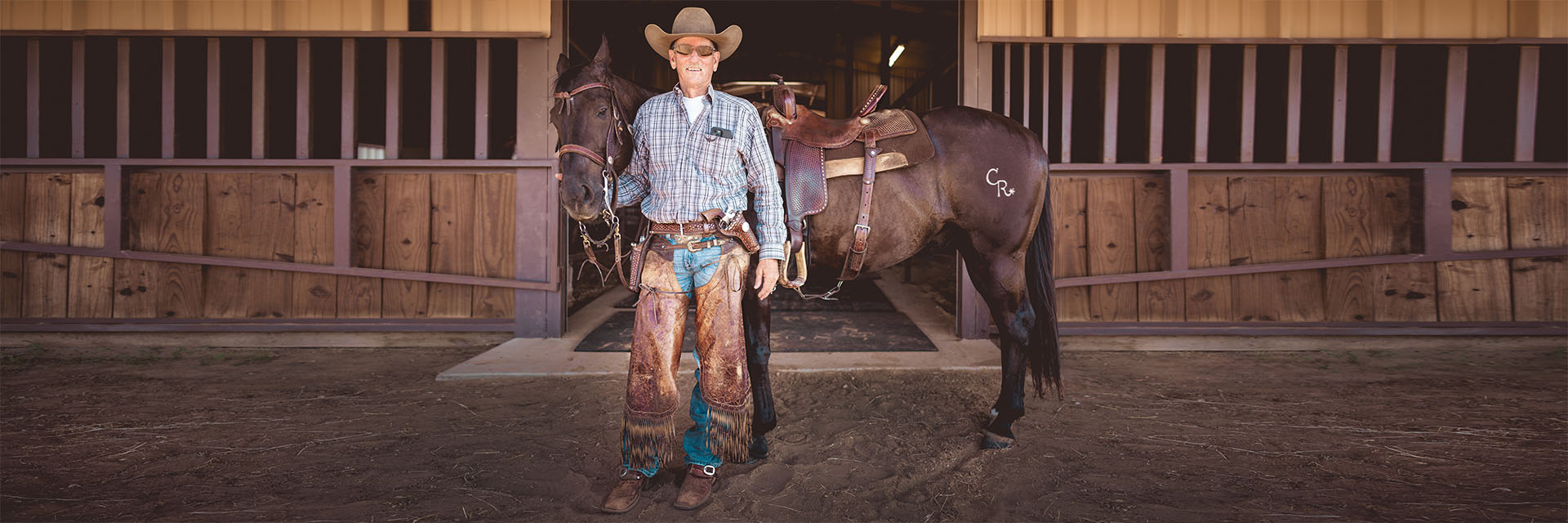When Don Jarrard isn’t running his excavation company and manning the heavy equipment that goes with the territory, he often can be found atop his horse. But Don doesn’t just ride for pleasure. He is active in the sport of cowboy mounted shooting. It’s a physically demanding competition sport that involves shooting at targets while riding a horse.
Don has had his share of bumps and bruises along the way while competing, but nothing that really slowed him down. That is, until both his knees began bothering him.
“As the years went on and my knees got a little worse, I’d come out [for competitions] and the pain would be so bad that it just finally got to the point where I couldn’t take it anymore,” Don recalls. “Even getting out of my heavy equipment became a problem. It was quite painful. I’d look in the mirror and I kind of looked like that old cowboy with the bowed legs.”
The 62-year-old tried over-the-counter medications and cortisone shots for the pain without much relief. He then sought the help of orthopedic surgeon Daniel Wagner, D.O., an orthopedic surgeon on the medical staff at Texas Health Clearfork.
“X-rays revealed both of his knees were very bad,” Wagner says. “They showed bone-on-bone, but his left knee was much worse. He had spurs and the spurs would grind into the bone and rub on the soft tissue causing his pain and interfering with his activities.”
Because Don had already tried conservative measures without much success, he was ready for surgery.
Wagner recommended a robotic-assisted left knee replacement for the Weatherford resident. During knee replacement surgery, parts of the damaged cartilage or arthritic joint are removed and replaced with a device designed to replicate the movement of a healthy knee joint.
With robotic technology on hand, Wagner was able to more precisely map the surgery in advance of the procedure and use a minimally invasive approach.
“Using the robot helps give us the data; it gives us real-time measurements and tension on the soft tissue,” he explains. “That tension allows us to fill in the gaps with the joint replacement to make sure one side is not too tight and one side is not to loose, and provides for proper tracking of the knee joint.”
Thanks to the outpatient procedure, Don was out of the hospital the next day and back on his horse just six weeks later. It wasn’t long before he decided to have his right knee replaced in a similar manner.
“Now that I’ve had both of my knees replaced, I don’t have the pain like I had before,” Don says. “I can do all the things I like to do — moving around, getting on and off my horse. Being able to go into a match not worrying about, ‘If I jar it real hard, is it going to hurt?’ I can get in and out of my equipment so much more easily now. It’s just a night-and-day difference.”
Don doesn’t have to think about his knees anymore. He can walk with straight legs and live a full life without compromise.
Find an orthopedic surgeon or take a hip and knee assessment at YourJointHealth.com.

